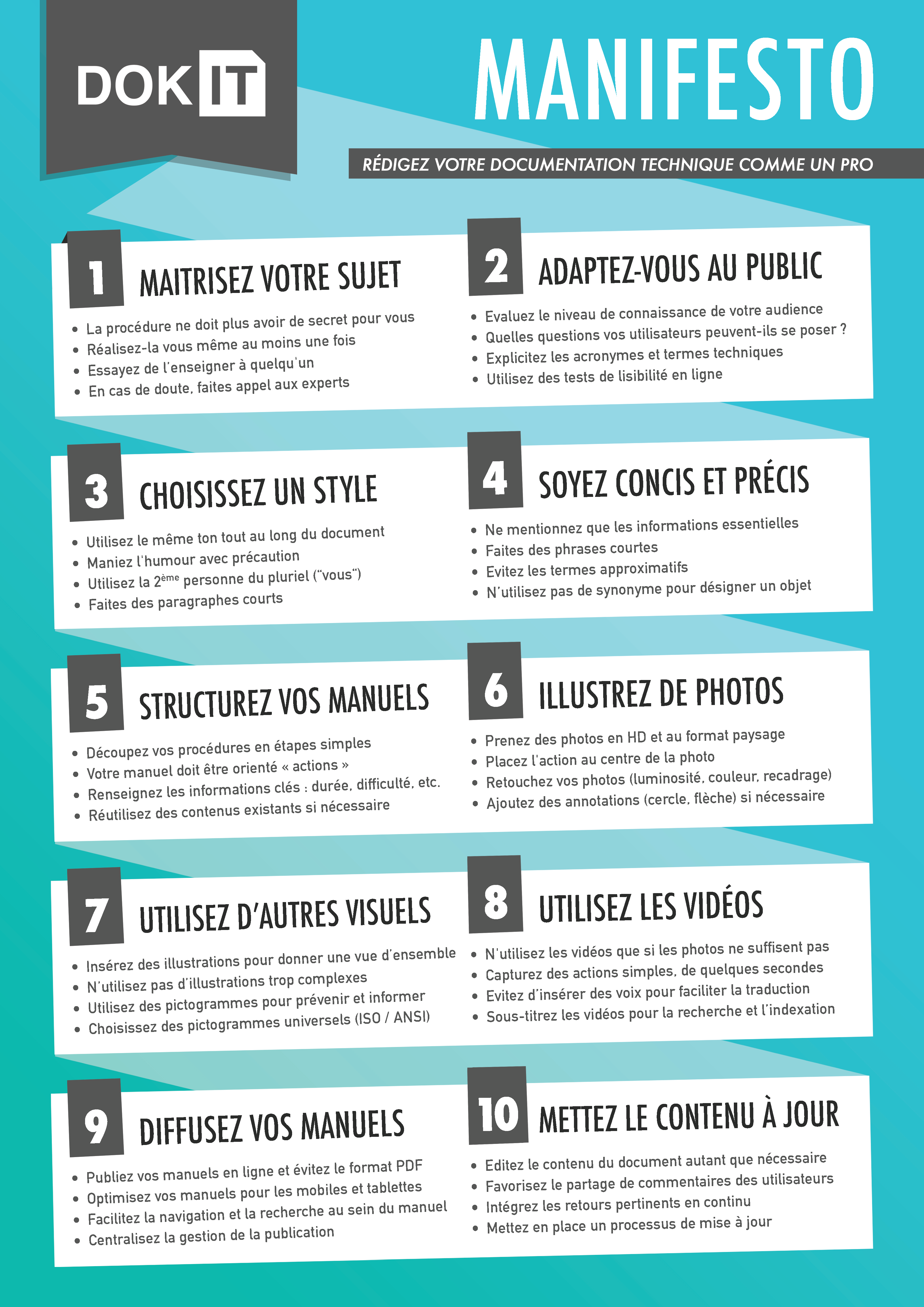User manuals to support, train, and assist your customers are vital in every business sector. Just a few examples: Factory Foreman needs to look over safety rules for a new press or a Doctor wants to make sure he’s clearing his equipment properly. What about private buyers? The woman who needs a size chart before ordering that dress, or the man who is having problems with his blender.
What do these customers have in common? They all want answers and support. They want it fast. That’s why instructions and user manuals that are up to date and easily accessible are so important. So important that the quality of documents and the customer support are factors in many purchases.
We have 10 Golden Rules to help you create an excellent user manual for your company.
1. Master your subject
When writing a user manual or instruction manual it’s important that you master the subject. To refresh your memory we suggest:
- Execute the procedure you are writing about. Recording yourself is a good idea.
- Teach the procedure you are writing about, and ask for feedback.
- Call the experts if you feel as if you are writing something wrong.
2. Adapt to the audience
Who is your audience? Who are you writing this for? An expert welder will understand the terminology about the new torch you are selling, but if you are selling that new torch to hardware stores, the average person off the streets may not have a clue what certain terminology mean. Here are some ways to make sure you are adapting to your target Audience:
- What questions might your users ask?
- Explain all the terminologies, acronyms, or other jargon you may use.
- Use an online readability test. There are many online for free that will tell you what reading level you are writing on. Yet again, think about the person who will be using this technical manual.
3. Choose a style
When choosing a writing style for a manual remember to use the same tone throughout the manual. Also remember what the mood of the audience will be at the time they are reading the manual. For example: When writing a troubleshooting page it’s safe to say that your readers will be frustrated because there is a problem with the product, now wouldn’t be a good time to have a humorous tone. Here are some tips to choose a tone:
- Use humor with caution: this is a technical manual, and it’s being read for information in contains.
- Use the second person (you)
- Avoid the use of literary devices such as comparisons.
4. Be concise and precise
Since technical manuals are read to inform the reader, the writing must be concise and precise. Your reader will quickly be looking for answers to a problem, to use the manual for safety or to start up procedures. Guidelines are below:
- Keep sentences short.
- Make sure the directions are precise. Write as if you are teaching them step-by-step.
- Only write about essential information.
- Don’t use synonyms, always state the name of the objects.
5. Structure your manuals
The structure of your manual is just as important as the concepts that your manual expresses. Ideas and instructions must be easy to find, and easy to execute. When structuring your manual:
- Write your procedures in simple steps
- Make the manual action oriented
- Tell your customers key information: duration, difficulty, required tools, etc.
- Reuse content if necessary.
6. Illustrate with photos
Nowadays, it’s easier than ever to take high quality photos. Readers need to see actions as well as read about them. Here are some tips for using photos in your manual:
- Make sure your photos are in HD
- Use the landscape layout format
- Place the action in the center of the photo
- Edit your photos for clear, crisp illustrations.
- Don’t be afraid to annotate your pictures. (circle something, draw an arrow, etc.)
7. Use other visuals
It is also helpful to use other types of visuals such as illustrations, but remember:
- Don’t use complex illustrations
- Use universal pictograms to prevent and inform (ISO/ ANSI)
- Use illustrations to give over views of ideas
8. Use videos when needed
If your words, photos, and illustrations still are not enough use videos.
- Capture simple actions.
- Clips need to last only a few seconds
- Don’t insert voices (voices are harder to translate)
- Subtitle videos for indexing and searching.
9. Distribute your manuals
Now that your manual is properly written it is time to distribute it to your clients. The best ways to distribute manuals are:
- Publish them online
- Avoid PDF (this format is harder to edit and update)
- Use good navigation and search functions in your manual.
- Optimize for mobile phones and tablets.
- Use centralized publication management.
10. Update the content
From time to time your team may need to update the content of the manuals, this is fine and will show your clients that you are constantly improving your products and services.
- Edit the content for understanding.
- Encourage users to comment and share opinions, ideas, etc
- Use relevant feedback.
- Design an update process.

Dokit Manifesto
Empower your users to create great technical documentation by getting this manifesto posted in your office or workshop.
This Manifesto is licensed under the Creative Commons BY-NC-SA 3.0 license.
Categories
- Cas client (1)
- Enterprise Wiki (3)
- Guides and instructions (7)
- Industry 4.0 (7)
- Knowledge Management (4)
- Mobile App (1)
- Training (5)
- Uncategorized (1)
- Work instructions (7)
Recent Comments
